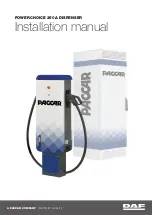
ELECTRICAL
1
REPAIR
ELECTRICAL PRECAUTIONS
The following guidelines are intended to ensure the
safety of the operator whilst preventing damage to
electrical and electronic components fitted to the
vehicle.
Polarity
Never reverse connect the vehicle battery and always
observe the correct polarity when connecting test
equipment.
High voltage circuits
WARNING: Before commencing work on
an ignition system, all high tension
terminals, adaptors and diagnostic
equipment for testing should be inspected to
ensure that they are adequately insulated and
shielded to prevent accidental personal contacts
and minimize the risk of shock. Wearers of
surgically implanted pacemaker devices should
not be in close proximity to ignition circuits or
diagnostic equipment.
Whenever disconnecting live high tension circuits
always use insulated pliers and never allow the open
end of a high tension lead to come into contact with
other components particularly electronic control units.
Exercise caution when measuring the voltage on the
coil terminals while the engine is running, since, high
voltage spikes can occur on these terminals.
Connectors and harness
Always ensure that these items are dry and oil free
before disconnecting and connecting test equipment.
Never force connectors apart either by using tools or
by pulling on the wiring harness. Always ensure
locking tabs are disengaged before removal and note
orientation to enable correct reconnection. Ensure that
any protective covers and substances are replaced if
disturbed. Having confirmed a component to be faulty
switch-off the ignition and disconnect the battery.
Remove the component and support the disconnected
harness. When replacing the component keep oily
hands away from electrical connection areas and
push connectors home until any locking tabs fully
engage.
Battery disconnecting
Before disconnecting the battery, switch off all
electrical equipment.
Battery charging
Recharge the battery out of the vehicle and keep the
top well ventilated. While being charged or
discharged, and for approximately 15 minutes
afterwards, batteries emit hydrogen gas which is
flammable. Always ensure any battery charging area
is well ventilated and that every precaution is taken to
avoid naked flames and sparks.
GENERAL PRECAUTIONS
Switch-off ignition prior to making any connection or
disconnection in the system as electrical surge
caused by disconnecting ’live’ connections can
damage electronic components.
Ensure hands and work surfaces are clean and free of
grease, swarf, etc. as grease collects dirt which can
cause tracking or high-resistance contacts.
When handling printed circuit boards, treat them as
you would a disc - hold by the edges only.
Prior to commencing a test, and periodically during a
test, touch a good earth, for instance, a cigar lighter
socket, to discharge body static as some electronic
components are vulnerable to static electricity.
Summary of Contents for DEFENDER 300Tdi
Page 310: ...76 CHASSIS AND BODY 2 DESCRIPTION AND OPERATION LAND ROVER 90...
Page 312: ...76 CHASSIS AND BODY 4 DESCRIPTION AND OPERATION LAND ROVER 110...
Page 314: ...76 CHASSIS AND BODY 6 DESCRIPTION AND OPERATION LAND ROVER 130...
Page 317: ...CHASSIS AND BODY 1 REPAIR DOORS RH rear door lock mechanism RH front door lock mechanism...
Page 415: ...86 ELECTRICAL 8 DESCRIPTION AND OPERATION...
















































